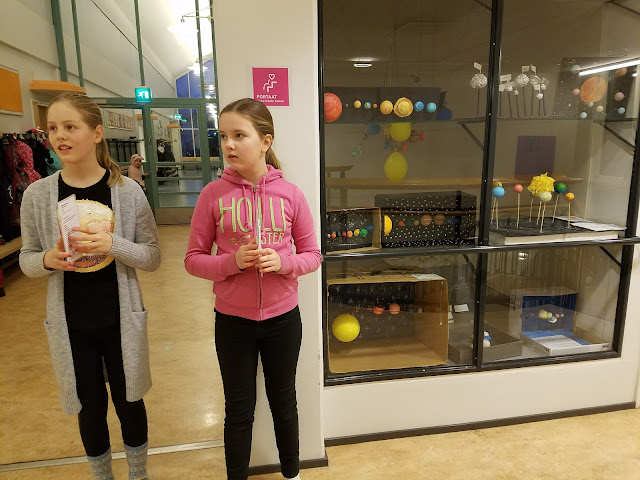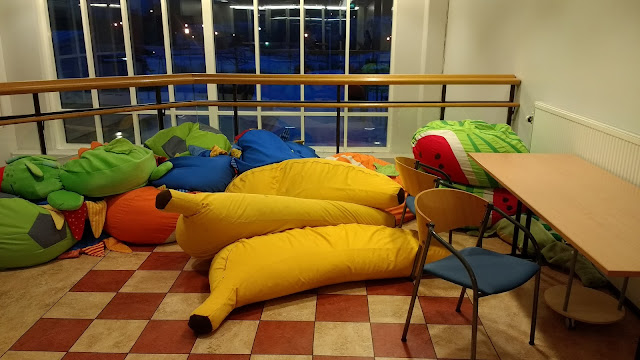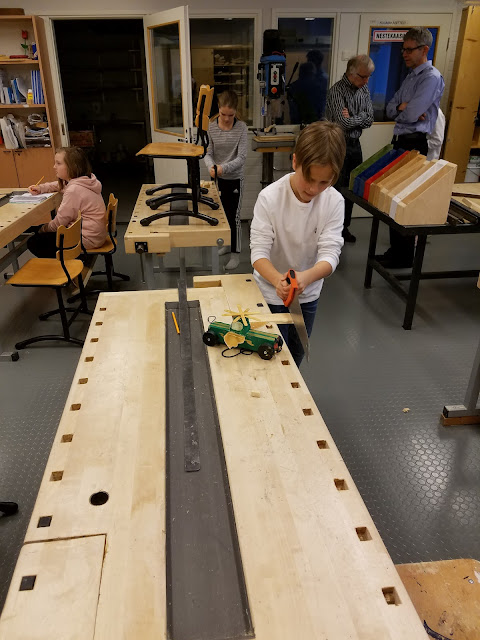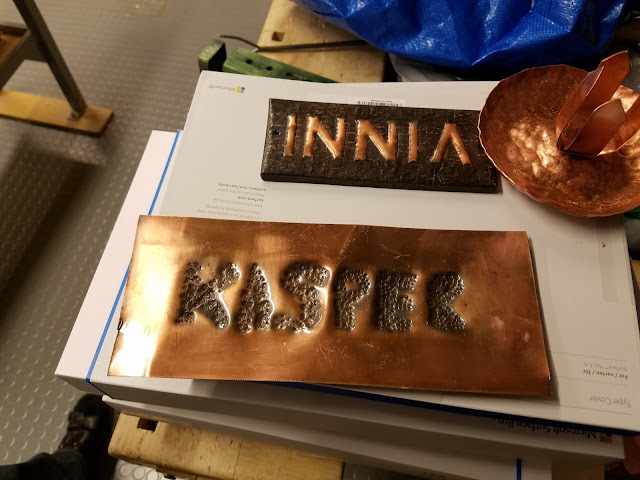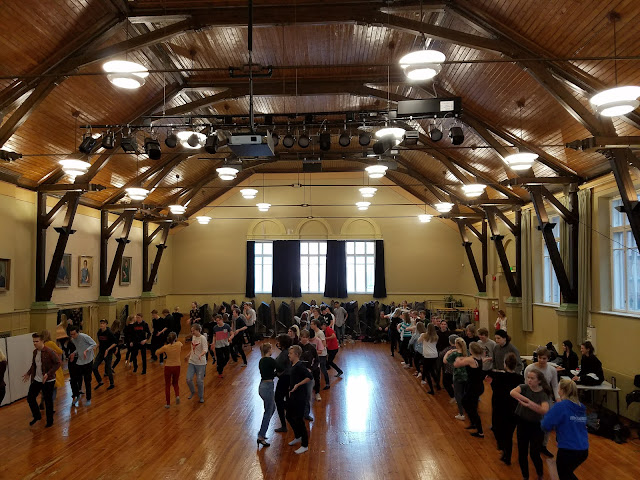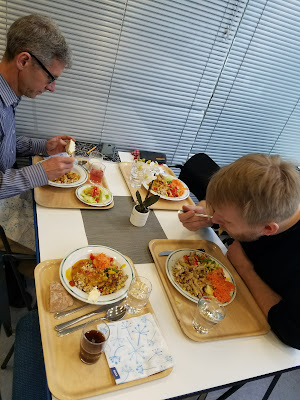The Jalavapuisto school is a English-Finnish bilingual primary school, grades 1-6. We arrived and were welcomed into the teacher's lounge by Anu Kahri, a 5th grade teacher who had arranged our visit. To start the day Finnish teachers meet, drink coffee, and socialize in the teachers' room before heading off to their classrooms- this is a nice time for teachers to connect.
Jalavapuisto school
Two wonderful students from Anu's class gave us a tour of the building, Anu had provided them with a laminated list of stops for our tour. The school has two floors and about 250 students. Built in 1994, the school has an open layout with plenty of work and display spaces in the hallways.
Our Tour Guides
Student's model of the solar system in a display case
Hallway
Space in the hallway for students
Main foyer with a student putting on his skates
Class
Below is a list of the most notable things that I noted while observing lessons at the Jalavapuisto school .
- Students were o.k. sitting, working or listening to their teachers, they were mostly quite and respectful. They are given a lot of time throughout the day for free-play and I believe that this allows them to focus during class.
- Students are accustomed to taking notes and all have notebooks in which they neatly do their work. It was clear that students benefitted from having a consistent place and method for recording their work. Teachers periodically collect and check these notebooks.
- Classes were mostly a mix of instructions followed by students working either in a workbook or their notebook.
A typical classroom
Anu helping her students
Our Presentations
A bit part of what we have to offer Finnish schools is class presentations about our schools and the American education system in general. Students are very curious about our schools and surprised by how large they are. Another big difference is the role that sports play in building school spirit and a sense of community in American schools. In Finland sports are run by sports clubs that are not affiliated with the schools, this allows students to be on teams with students from different schools.
Presentation to 5th Grade
Presentation to 1st Grade
STEM Projects
Students from this school are entering a national STEM design contest. The students have to design, build and market a toy that is unique and that will have "lasting" play, meaning that kids will not get bored of it. The students had to draw out an individual design in their notebooks ahead of time and then the group decided which design they were going to build. Students were allowed to leave the classroom to work outside and to go to the wood shop if they needed materials or tools to construct their projects.
Students working on their toys
Student helping another group with their project.
Student visiting the wood shop to work on his project.
Wood Technology
One of the core subjects in primary school is wood tech. Students learn to plan projects and use tools and machines to build them. Again, students have notebooks for this class and are well trained in using the notebooks to design and plan the construction of their projects
The Workshop
Students using their plans to construct name plates.
Recess
Students have multiply breaks throughout the day to go outside and play. There is even an ice skating pond at the school and a few students suited up for a game of hockey. Others played on the icy hill which would have certainly been seen as a liability in the States.
Fulbright Orientation
The 2-day orientation included the following events.
- General information about living in Finland and the Fulbright program
- History of Finland, presented by Petteri Granat, History Teacher, Vaskivuoren lukio
- Panel Discussion: Finnish System of Education (K-12)
- Finnish System of Higher Education and Research, presented by Timo Korkeamäki, Dean of Research, Professor of Finance, Hanken School of Economics and Teemu Kokko, President, Haaga-Helia University of Applied Sciences
- Visit to the U.S. Embassy in Finland
- Teacher Education in Finland, presented by Professor Jari Lavonen, Head of the Department of Teacher Education, University of Helsinki
- Tour of the Sibelius-lukio school, a secondary school that specializes in performance and music.
- Tour of Helsinki landmarks, led by Emilia Holopainen.
- Suomi 101 (Finnish language 101)
Senior dance performance at Sibelius-lukio. This is a graduation dance that all Finnish secondary school seniors learn and perform as part of graduation.
Fulbright Teachers and Scholars
Tour of Helsinki Landmarks.
Suomi 101
Educa
During the weekend I had a chance to go to Educa, Finland's largest and most important annual training event for professionals in the education field, organized by OAJ, the Trade Union of Education.
Educa Education Trade Show
Other Pictures
Run on the frozen Baltic Sea
Cafe on the Baltic

